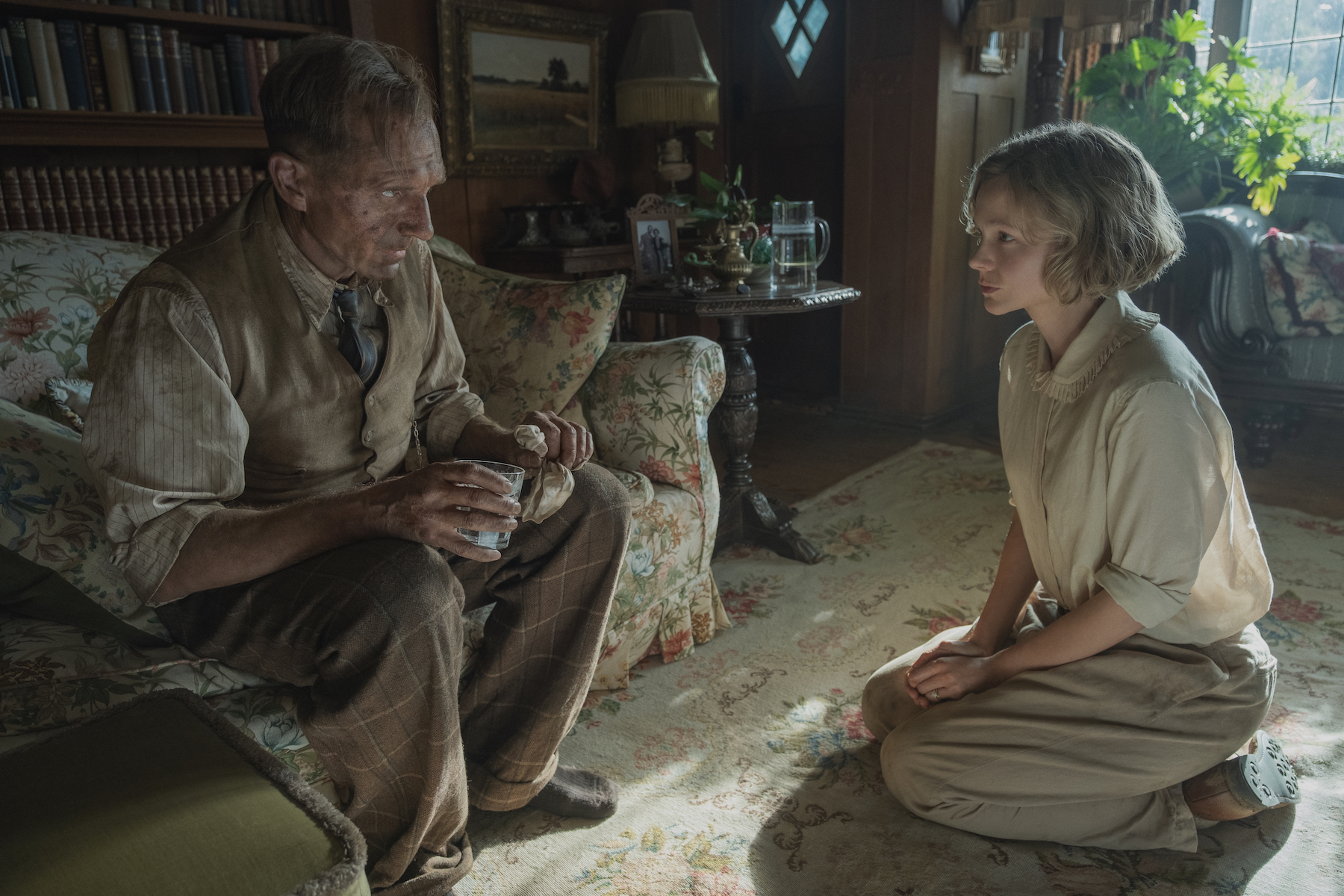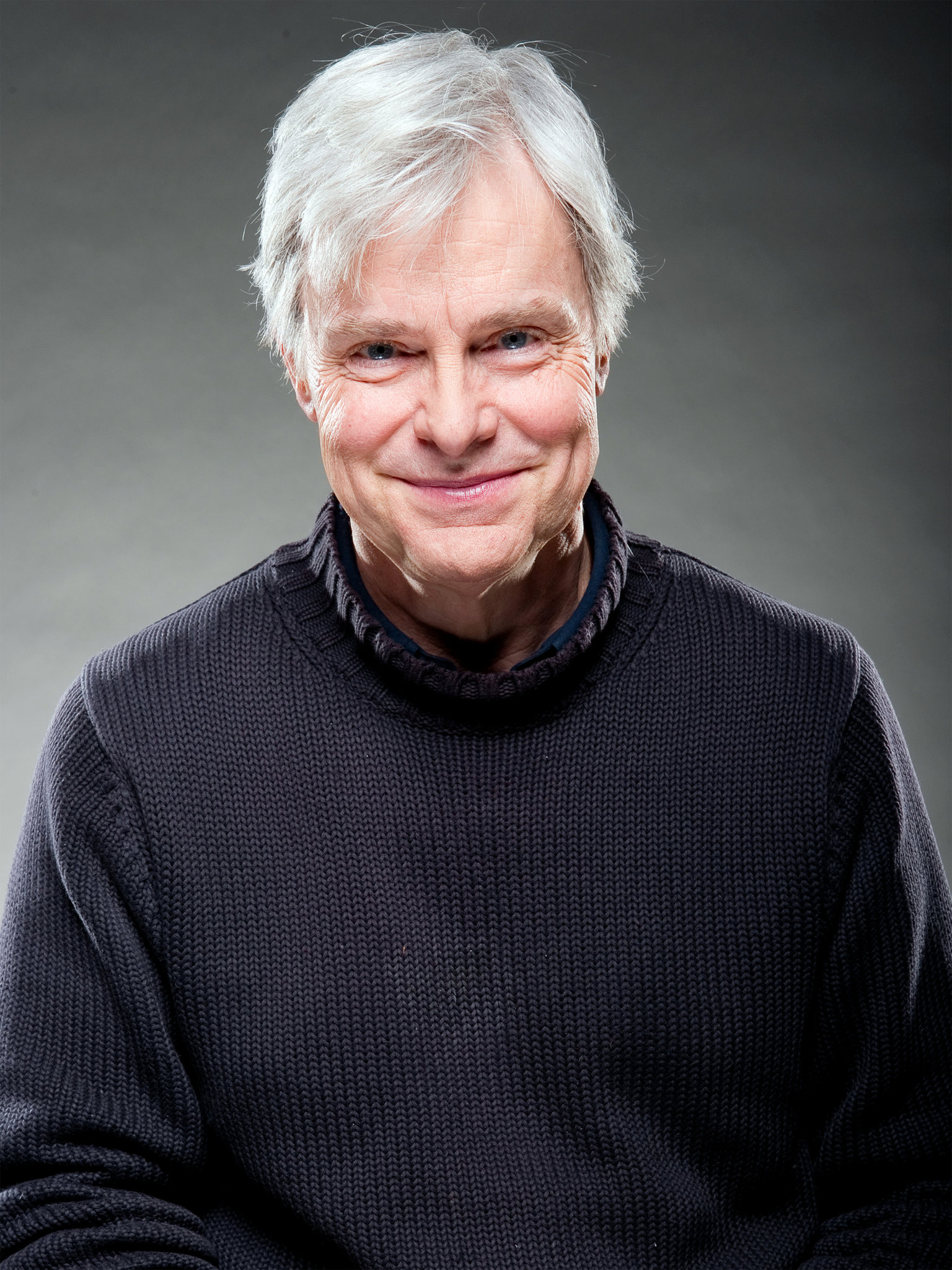The next phase explored the burial container within the ship, filled with a richness trove of almost perfectly-preserved artifacts made from ochroid and garnet: a stunning headpiece, shoulder clasps, a golden band buckle. Pretty distributes the artifacts to the British Museum, where they sit to this day, recognized as the “Sutton Hoo find.” This interesting story is the subject of Netflix’s new film “The Dig,” with Moira Buffini adapting John Preston’s best-seller for the screenplay. As we know, the Britishers ruled the world, and please took stole every fascinating object they found from across the world to showcase in their fancy museums. And the movie reflects the same gesture, which was quite unpleasant to watch from a nationalist view.
The Digging
Basil Brown (Ralph Fiennes) is a gentleman of working-class origins trained on excavating archaeological sites by his father and grandfather. Edith Pretty (Carey Mulligan), a widowed woman breathing on a huge estate with her miniature son Robert (Archie Barnes), offers him a job Basil away from the Ipswich Museum to dig up the hillocks on her property. Basil doesn’t have high hopes. People have accumulated over these sites for centuries. He notifies her. She allows him more money than the institution, so he gets to work. Young Robert cinches on to Basil as a new father-figure and romps around on the pile as Basil digs. At first, Basil appropriates just a small ad-hoc team. However, crowds of people stumble onto Suffolk, wanting a piece of the action after the ship is exhibited. Told with integrity and grace and a sensitivity to the pastoral Suffolk landscape of extensive fields and wider skies, “The Dig” is frequently quite thrilling, individually in the dig’s initial phases, when it’s just Basil and Edith are explaining how to proceed. Edith had a vigorous interest in archaeology and was admitted to the university. Her father nixed those determinations. She took care of her father throughout his long illness and only got wedded after he died. This sad backstory is explained in just one or two lines. However, it’s all over Mulligan’s pinched defined face, dogged by loss and frustration. Father-dominated her complete life, now widowed, in very feeble health herself, she decides to dig up those mounds, even though the war is approaching. The first half of the movie is mostly Mulligan and Fiennes, and there’s an impressive dynamic at work.
First Mock
They come from two distinct worlds and classes. However, they converge in powerful ways. They share an enthusiasm for knowledge, for findings of the linkages between eras and peoples. Tutankhamun’s tomb was unearthed in 1922 by British Egyptologist Harold Carter, whom Edith name-drops at the whole point. Edith would have been a youngster in 1922. One can assume how that world-changing event—and understanding those artifacts for the first time—would have supplied her with wonder and awe. She has a passion for those mounds in her yard. She has a perception something is down there. When Basil explores the ship, he claims it sixth/seventh century Anglo-Saxon, which the “experts first mock.” However, he’s right. The plot thickens when people stumble onto the land to continue the dig and jostle for balance. Ken Stott plays Charles Phillips, a renowned archaeologist, who maintains the site far too valuable to be in Basil’s hands, an apprentice with no formal education. Stuart Piggot (Ben Chaplin) and his budding-archaeologist lady Peggy (Lily James) are the new tunneling company. Edith’s cousin Rory (Johnny Flynn, beautiful as always) takes pictures of the dig.
Fired Up
“The Dig” loses a little vapor during this section when it gets side-tracked by Peggy’s disappointment in her marriage. Stuart seems just a slight bit too into one of his male collaborators (Eamon Farren), and Rory is so peaceful and gentle and makes Peggy feel something she’s never felt in her marriage. These complex emotional matters arrive over an hour into the movie, far too late to have real staying power. Basil mostly escapes during this subdivision, and the film misses him. However, this larger collection is eventually shuffled into the overall mix. What signifies is the dig itself. Stone’s consideration of detail is essential: he shows how a dig must progress, the dangers of a dig, how the artifacts are identified and then removed from the dirt—the way this is impersonated helps non-archaeologically-minded following members understand what is occurring and how. You believe in Fiennes’ expertise. You understand in Peggy’s too. The other element is the passageway of war. RAF planes explode over the field with developing regularity. Everyone knows that once the war is announced, the digging will have to cease. They’re all fired up with a feeling of urgency.
Art Culture
There are consequences of emotion and triumph, unexpectedly during discovery sequences, but the mood is understated, quiet, friendly. Phillips makes a passionate speech about what the “Sutton Hoo find” means, and it’s an extensive thematic element. Common wisdom understood the Anglo-Saxons were powerful savage marauders. However, the exquisite artifacts created showed “they had art. They had culture.” The Sutton Hoo find described a shift in consciousness around bestowed ancestry and legacy and a sense of possession over the accumulated past. These themes are all present in “The Dig.” However, nothing is underlined or punched to amplify significance. Instead, you get Edith and Basil fastening eyes across the hole in the ground, speechless, two misfit strangers realizing they were right, there is something down there, and it is exceeding their wildest dreams. The site cinematographer, Rory (Johnny Flynn), is also a pivotal license shoe-horned in as a love affair for Peggy. However, it is the opposite love that strikes pure and true. There is Edith’s smooth grieving at her husband’s dissolution. There is also the one connecting Brown and his wife, May (Monica Dolan), her daily letters to him, asking her whether she will stay the night and giving him the time to say goodbye to the “old girl” on the ship. The association between Edith’s son, Robert (Archie Barnes), and Brown, as he teaches the young boy to stand for the stars even while looking reality in the face, is uniformly touching.
Verdict
The project launched in 2006 when producer Ellie Wood read The Dig by John Preston, ahead of its 2007 discovery, and optioned the novel to adapt it for the screen. In September 2018, Ralph Fiennes and Nicole Kidman were in negotiations to star in the film. However, by August 2019, Kidman was no longer associates with the project, with Carey Mulligan cast to replace her. The film’s rights also transferred from BBC Films to Netflix. Lily James entered discussions to join the cast in September. In October 2019, Ben Chaplin, Jhonny Flynn, Ken Stott, and Monica Dolan joined the film’s cast. The verdict must say the time spend on the movie was well spent as such a masterpiece is the result of all the hard work. Principal Photography began at Schacklefors in Surrey in October 2019 – Norney Grange.
Rating
The Photography was absolutely amazing, and the connecting sequence was flawless. The only way to sum up the appreciation for the movie sequence is, “It lined up the storyline like pearls tied up together in a beautiful garland.” The movie adapts its script from the best-selling novel. So, if the movie would not have done well, it would be a bummer for the team as they already had such an amazing screenplay. The screenplay is as good as Sherlock Holmes in the world of British script formatting. To, sum up the only word that can describe the movie is “Lovely.” From my perspective, the rating for the movie would be 4 out of 5.


